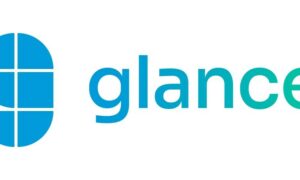When you apply for a mortgage, you’re not just asking for money—you’re asking a lender to believe in your ability to pay it back, long term. That’s where the mortgage underwriting process comes in. At its heart, underwriting is all about risk assessment. Can you make the payments? Do you have a solid credit history? Is the property worth what you’re paying?
The person making that call is the underwriter—a financial detective of sorts. Their job is to dig into your finances, credit profile, and the home itself before deciding whether to grant mortgage approval.
The entire process unfolds in phases, from the moment you submit your application to the lender’s final green light: a coveted milestone known as Clear to Close (CTC). Each step has its own hurdles, but understanding the road ahead can make all the difference.
The 4 Stages of Mortgage Underwriting
Stage 1: Application & Initial Documentation Review
The journey begins with paperwork—lots of it. You’ll need to provide:
- Recent pay stubs and tax returns to confirm your income
- Bank statements to verify your assets
- A credit report to paint a picture of your borrowing history
At this stage, lenders do an initial scan. They’ll calculate your Debt-to-Income (DTI) ratio and check if your credit score meets their minimum requirement.
Think of this phase as the front gate. If the numbers are way off, your application might not move forward. But if things check out, you’re on your way to the underwriter’s desk.
Stage 2: Underwriter’s Deep Dive – The 3 Pillars of Approval
This is where your file gets serious attention. The underwriter will focus on three core areas: your ability to repay, your creditworthiness, and the value of the home.
Pillar 1: Capacity to Repay
Capacity is all about your income versus your debts. The underwriter will review your front-end and back-end DTI ratios. In many cases, your total monthly debt load (including the new mortgage) shouldn’t exceed 43% of your gross income.
But it’s not just about math. Stability counts, too. Expect them to check for job consistency—ideally two years or more in the same role. If you’re self-employed, you’ll need solid tax records and maybe even a CPA letter.
Pillar 2: Creditworthiness
Your credit report isn’t just a number. It’s a story. The underwriter will read between the lines: Are there missed payments? Recent credit inquiries? New accounts?
If there are blemishes—say, a past late payment—they may request a letter of explanation. What matters most is whether those issues are behind you and how you’ve managed your finances since.
Pillar 3: Collateral Valuation
Even if your finances are perfect, the loan hinges on one thing: the property itself. An independent appraiser will assess the home’s market value.
From that, the underwriter will calculate your Loan-to-Value (LTV) ratio. If your LTV exceeds 80%, that usually triggers Private Mortgage Insurance (PMI), which adds to your monthly payment.
Stage 3: Conditional Approval & Clearing Requirements
Once the underwriter has reviewed your file, they may issue a conditional approval. That means you’re close—but not quite there.
You’ll likely be asked to:
- Submit an updated pay stub or bank statement
- Explain a large deposit with a gift letter
- Show proof of homeowner’s insurance
Many of these requests stem from findings in the Automated Underwriting System (AUS)—a digital engine that flags anything needing clarification. Lenders use tools like Fannie Mae’s Desktop Underwriter to streamline this step, but the underwriter still has final say.
Stage 4: Clear to Close (CTC) & Funding
If you’ve handled every condition and all documentation checks out, you’ll get that long-awaited status: Clear to Close.
From here, your lender will prepare the Closing Disclosure, a final breakdown of your loan terms and costs. Once you review and sign the documents, the lender releases the funds. That typically happens once title insurance and homeowner’s insurance are confirmed to be in place.
At that point, the mortgage becomes real—and so does your new home.
How Automated & Manual Underwriting Shape Your Process
Today’s mortgage world runs on tech. Most loans begin with an Automated Underwriting System (AUS)—software that crunches your application and returns a risk assessment. The most common tools include Desktop Underwriter (DU) and Loan Product Advisor (LPA).
If your file is clean and your numbers align with standard guidelines, you might breeze through. But not all borrowers fit into neat digital boxes.
That’s where manual underwriting comes in. This route is often used for borrowers with non-traditional income, credit issues, or unique property types. It means more documentation, more scrutiny, and potentially longer wait times.
It can also affect your interest rate. Lenders use risk-based pricing—so higher risk (due to credit score, DTI, or LTV) may result in a higher rate.
5 Common Underwriting Delays and How to Avoid Them
Even strong applications can hit speed bumps. Here are some of the most frequent holdups—and how to steer clear:
- Missing or Expired Documents
→ Always provide documents dated within the last 60–90 days. - Large Unexplained Deposits
→ If someone gifted you money, submit a gift letter with documentation. - Low Appraisal
→ You can appeal or request a second opinion if the value seems off. - Credit Score Drops
→ Avoid applying for new credit or making big purchases during underwriting. - Job Changes
→ Try to maintain stable employment until after closing. Sudden shifts can raise red flags.
Key Takeaways: Navigating Underwriting Successfully
A smooth mortgage underwriting process comes down to a clear equation:
Complete documentation + Steady credit profile + Reasonable DTI and LTV = Clear to Close.
Your underwriter isn’t out to trip you up—they’re protecting the loan. Stay responsive, stay organized, and don’t hesitate to ask questions. The faster you fulfill conditions, the faster you’ll be holding your keys.



































